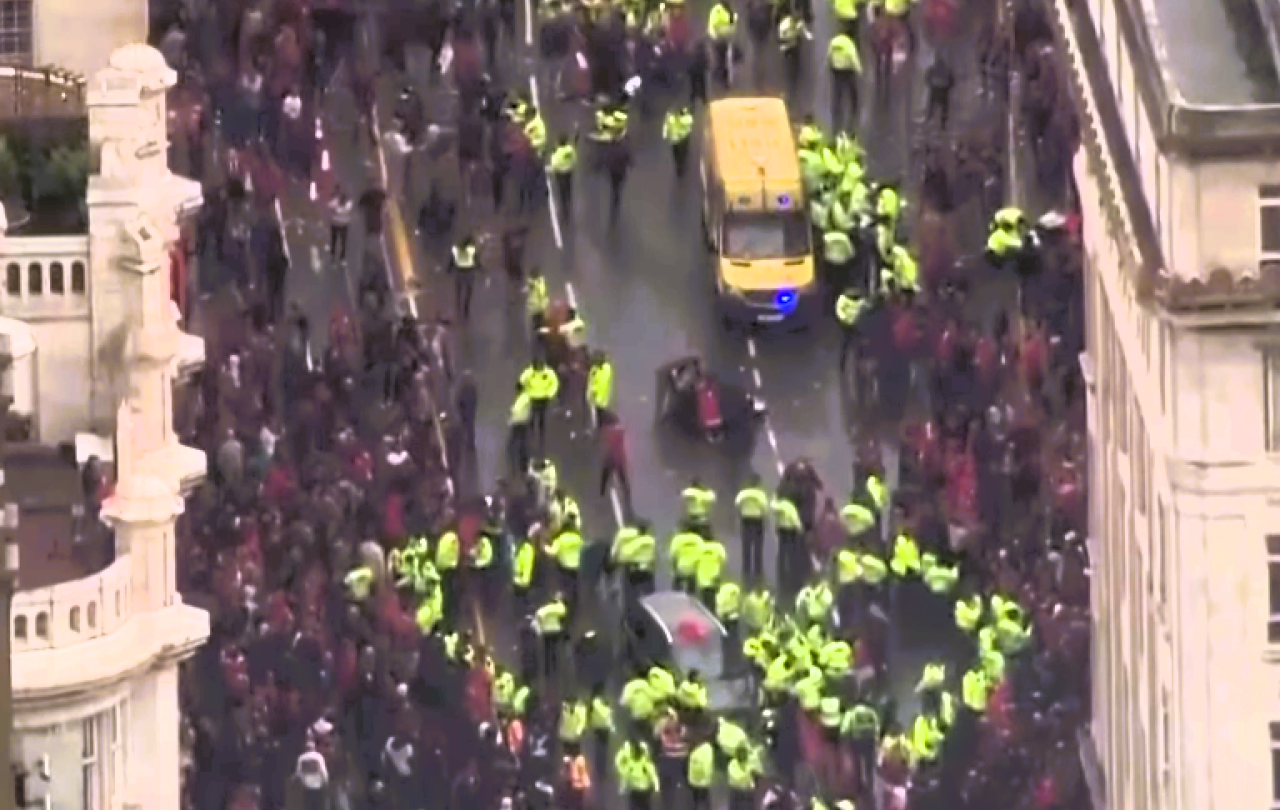
Sometimes football is interrupted by real life, and you remember how trivial it ultimately is.
On 26 May, the city of Liverpool was gearing up to do what it does best: celebrating. Specifically, celebrating the parade for Liverpool’s lifting of the Premier League trophy the day before. I’ve written before about the day it was confirmed that Liverpool would win the league. The joy, the relief, the tears; the community of it all. Cody Gakpo with his top off.
Here the whole city would be involved, and many more besides who had travelled just to be there. Not even torrential rain can dampen scouse joie de vivre. The city alive in red, joined in adulation of its team as the Premier League Champions’ bus paraded across the city. What a day.
And then, an interruption. Reports begin to emerge that someone had driven a car into people on the parade route. You fear the worst. And then it’s confirmed, and you fear even more.
Suddenly the parade feels trivial; football feels trivial. You’re just waiting for news that everyone is okay. 109 people are injured and it’s a miracle that no-one is killed, although you imagine many more will live with the trauma of the day for years to come.
The immediate and (quite literally) uninformed commentary and misinformation spread by many on the far right was as predictable as it was racist. The same people seemed genuinely disappointed when the perpetrator turned out to be, not an immigrant or an asylum seeker driven by ‘non-British’ values, but a 53-year-old white British man from the city. As ever, the far right demonstrating once again that the first reaction is very rarely the right reaction.
We still don’t know the full details of what happened and why, but the man’s neighbours described him as “normal” and expressed their surprise at him being caught up in something like this.
I was surprised by how surprised everyone was at this.
The Christian Bible is full – full – of ‘normal’ people committing abnormally evil acts. David, Israel’s most beloved and highly praised king, rapes a woman called Bathsheba resulting in her getting pregnant. He then tries to convince the woman’s husband to sleep with her so people will think the baby is his. He doesn’t, so David has him killed. Israel’s most beloved and highly praised king.
David may be one of the starkest examples from the Christian Bible, but he’s certainly not the only instance of a normal, or even seemingly ‘good’ person performing unspeakable acts of violence and evil. Time would fail me if I tried to recount them all here.
People are fundamentally good. I will die on this hill. People are fundamentally good. But the road from normality to evil is shorter than we often care to admit.
The Slovenian philosopher and professional eccentric Slavoj Žižek tells a joke in his helpful little book Violence. Workers are suspected of stealing from a factory and so have their wheelbarrows checked every day at their shift’s end. Only when it’s too late do the factory owners realise they’re stealing wheelbarrows.
We have so many frameworks and watermarks for identifying what constitutes ‘violence’ in society. And yet Žižek’s point is that these frameworks and watermarks are themselves upheld by violence. There’s violence inherent in the system.
This is one of the central points in Christopher Nolan’s The Dark Knight, too. In one memorable scene, the Joker is talking to Harvey Dent while strapped to a hospital bed. He says:
“Nobody panics when things go ‘according to plan’, even if the plan is horrifying. If tomorrow I tell the press that a gangbanger will get shot or a truckload of soldiers will be blown up, no one panics, because it’s all ‘part of the plan.’ But when I say that one little old Mayor will die? Well then everyone loses their minds!”
But the Joker’s point is that none of this is normal. Not really.
This is the true crime of the world we live in today, that it has convinced us of the normality of evil while undermining the normality of loving one another.
But they are all symptoms of the same sickness. The repulsion we feel towards the ‘normalcy’ of the driver at the Liverpool parade is the repulsion we ought to feel towards any act of violence, be it the violent persecution of immigrants and asylum seekers, the enforced annexation of sovereign territories, or the attempted genocide of unwanted people groups (to conjure up some obviously hypothetical situations …).
To be surprised at the violence seen in Liverpool on 26 May at the hands of a ‘normal’ man is to miss the fact that society’s very norms and standards are, themselves, deeply violent. Fashion business built on modern slavery and child labour; banking corporations paying their bosses obscene bonus wrung from the pockets of people barely able to make ends meet; at least 354,000 people homeless in England alone by the end of 2024.
All these things are acts of violence. All these things are normal. They are the norms and standards against which we look for violence in our world today. But they themselves are deeply violent evils. They are the violence inherent in the system. They are the workers’ wheelbarrows. They are the Joker’s truckload of soldiers.
We live in a society that functions precisely because of deeply unjust and violent systems and structures. The violence is necessary for the functioning of the system.
But while Liverpool’s Champions League parade demonstrates this, it also shows us the correct response to the normality of evil: love.
In the aftermath of the incident, people took to social media to offer beds for the night, lifts home, food, drink. Anything and everything that anyone might need. And do you know what the most remarkable thing about this was? It was all so … normal.
Of course this is what you do in situations like this. You love, and you care, and then you love, and then you care. What else is there to do? It’s the most normal things in the world. People are fundamentally good. I will die on this hill.
And this is the true crime of the world we live in today, that it has convinced us of the normality of evil while undermining the normality of loving one another. In such a world, to love one another, to care deeply and meaningfully for those around, is nothing short of an act of resistance to the violent established order.
Support Seen & Unseen
Since Spring 2023, our readers have enjoyed over 1,000 articles. All for free.
This is made possible through the generosity of our amazing community of supporters.
If you enjoy Seen & Unseen, would you consider making a gift towards our work?
Do so by joining Behind The Seen. Alongside other benefits, you’ll receive an extra fortnightly email from me sharing my reading and reflections on the ideas that are shaping our times.
Graham Tomlin
Editor-in-Chief





